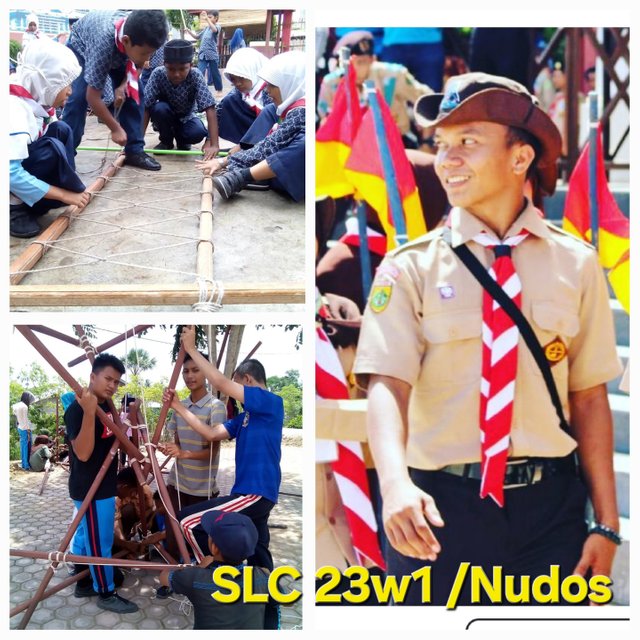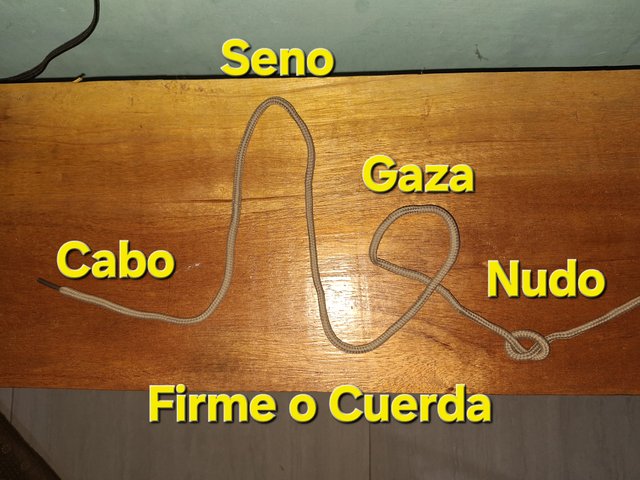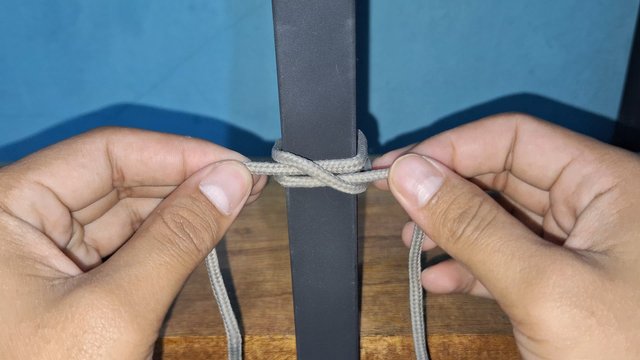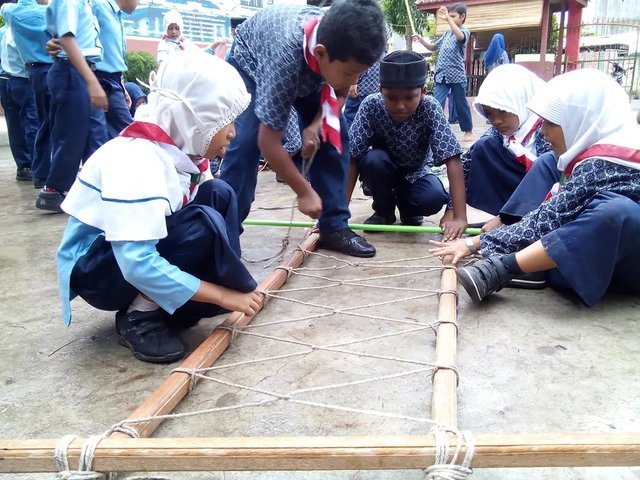Exploration-s23w1/Nudos 🪢
Hello Stemian friends! On this occasion, I would like to participate in a learning challenge which is about knots. This knot-making exercise reminds me of my experience 15 years ago when I was a Scout and actively participated in camp activities.
🙋♂️ Have you ever tied a knot? Tell us about your experience.
I would like to share an interesting experience about ropes skills, especially about knots and ties. This activity reminds me of the good old days of Scouting, where we not only learned about rigging, but also built various useful structures.
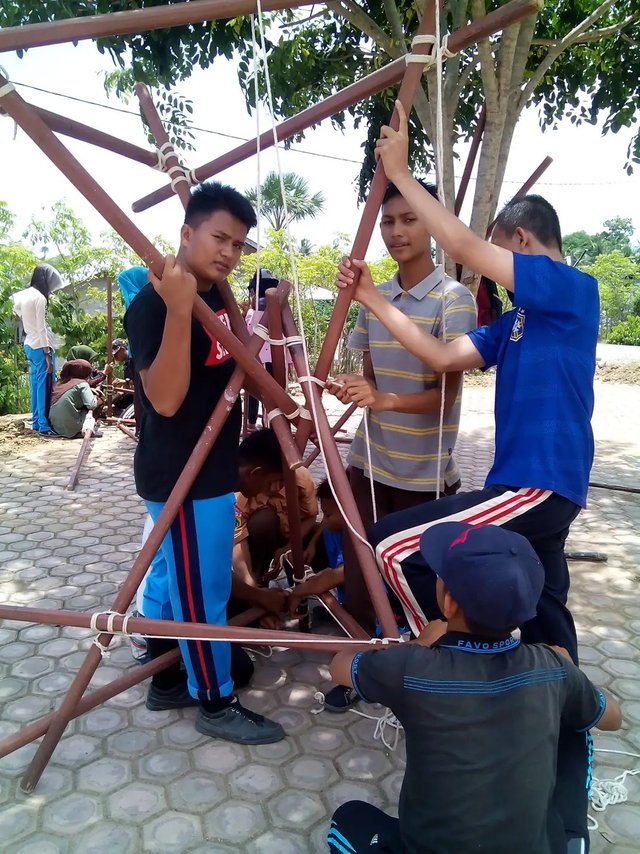 | 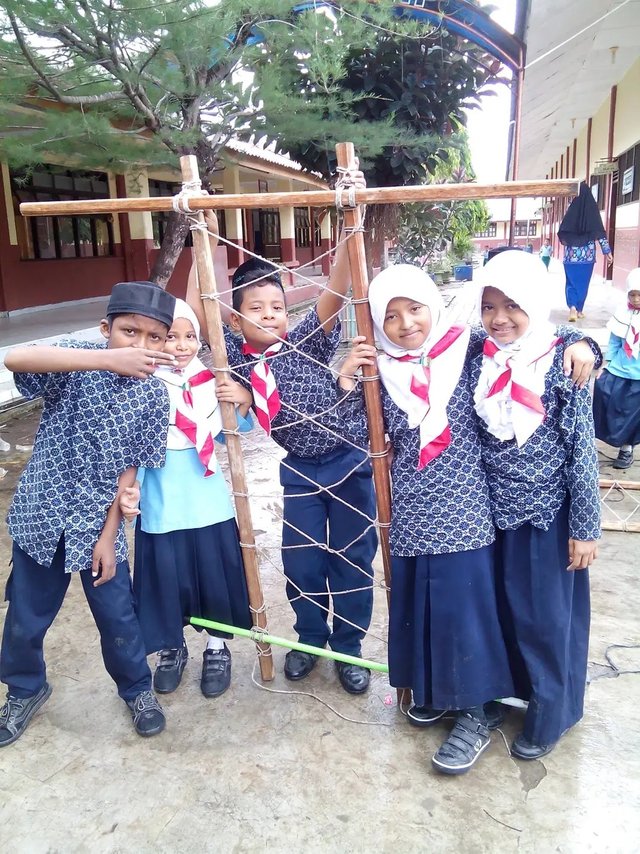 |
|---|
When I was still in school I not only learned the theory of tying knots, but we have also made various kinds of buildings such as viewing towers, emergency bridges, stretchers, gates, tent frames and others. All of this was done using ropes and knots that we had mastered.
🤷♂️ On a rope place the parts
Initially I had a little trouble understanding the explanation of the parts mentioned because the contest was written in Spanish, but even so I tried to place the parts on a rope as explained in this course.
- Firme o Cuerda : this is the rope itself regardless of its length and diameter, usually a scout uses hemp rope in camp activities.
- Chicote Punta o Cabo : the A and B ends of a rope.
- Seno: The visible wave along the rope between the two ends.
- Gaza : the inverted loop between the lengths of the rope.
- Nudo (Knot) : a union of ties that can bind firmly, either between rope and rope or with objects.
🙅♂️ A video of the knot I made and an explanation of its use in everyday life.
👇 Rizo Plano knot
Rizo Plano knot or in English called Reef Knot or Square Knot, this knot in everyday life is useful for tying light objects, such as tying packages, making stretchers, tying shoelaces and tying wound dressings which are usually used in first aid cases. One of the advantages of this knot is that it is easy to tie and easy to untie.
👇 The Figure Eight knot
The Figure Eight knot, the use of this knot in everyday life for activities such as rock climbing, mountain climbing, or pulling a vehicle. The multi-layered nature of this knot makes it a strong bond and is also thick so it is not easily released making this knot suitable for lifting heavy loads.
👇 The Ballestrinque
The Ballestrinque knot is also known as the Clove Hitch, while in Indonesia we call it the base knot. In scout camp activities this knot is very important and is often used in every daily activity because it serves to start a tie and end a tie.
👇 The Guide Knot or Bowline
The Guide Knot or Bowline, in my opinion, because it is shaped like a bracelet and does not tie or strangle tightly, is useful for tying pets, lifting and rescuing someone. Also, the advantage of this knot is that it is easy to make and easy to untie.
👇 The Margarita
The Margarita knot is useful for shortening long ropes without the need to cut the rope, and it is also useful for strengthening weak parts of the rope. Although there are many other knots that can be used to shorten the rope, this knot has its own advantages because it is easier to make and easier to untie.
💁♂️ Which is easier and harder to do and why?
The base knot or Balestrique is the easiest knot to master. This knot is often used in various camp activities, both as the beginning and the end of a tie. Because of its frequent use, I can even make the base knot while closing my eyes.
However, there is another knot that is considered more challenging, which is the loop eight knot. This knot requires more precision and a better understanding of the direction and section of the rope. the loop eight knot is more difficult in my opinion because of its multi-layered ties.
🧏♂️ Do you make any mistakes when tying knots? What are the most common mistakes when making knots and how can you avoid them?
Tips for making knots easier. First, have a good understanding of the direction and section of the rope. The more we understand the flow of the rope, the easier it will be to make knots, even difficult ones.
One of the challenges in learning knots and ties is understanding the direction of the rope. Many people have difficulty because they do not understand the direction of the rope properly. However, with diligent practice and a good understanding of rope direction, we will find it easier to master different types of knots and ties.
Secondly, roll up the long rope before making knots. A neatly coiled rope is easier to control and does not interfere with the knot-making process.
On this occasion, I used shoelaces for practice. Short and manageable shoelaces are ideal for learning basic knots. However, when we use hemp rope which is usually 10-15 meters long, coiling the rope is a must to make the knot-making process smoother. So in my opinion, this is how to avoid mistakes when making knots.

Thus this article, I hope it is useful and inspires all who read it.I also invite you to participate in this contest.
Thank you for reading this post, don't forget to comment.
